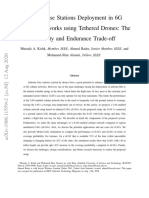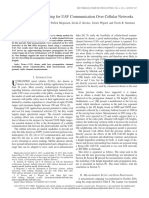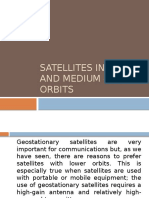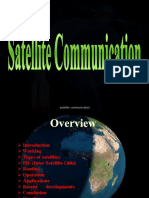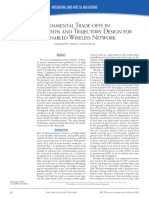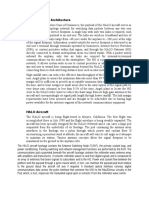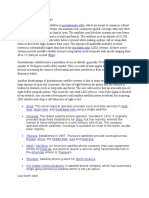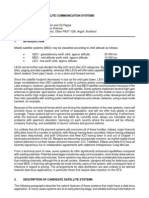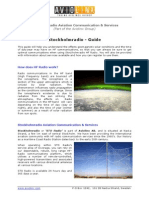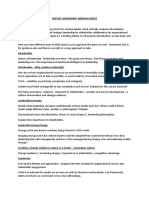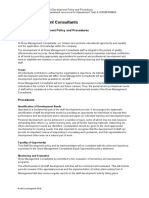0% found this document useful (0 votes)
93 views2 pageseVTOL Communication System: Figure 2 - Potential eVTOL Connectivity Solutions
An eVTOL's flight profile includes takeoff, ascent, cruise, descent, and landing phases. During the cruise phase, on-ground communication networks are not effective and alternative solutions are needed. The document evaluates two potential solutions: 1) Using modified cellular networks with three-dimensional coverage to connect eVTOLs flying at cruising altitudes to ground-based towers. 2) Using tethered balloons connected to eVTOLs, where the optimal frequency for the wireless connection depends on minimizing path loss over the distance between the balloons and eVTOLs.
Uploaded by
JOSPHAT ETALE B.E AERONAUTICAL ENGINEERCopyright
© © All Rights Reserved
We take content rights seriously. If you suspect this is your content, claim it here.
Available Formats
Download as DOCX, PDF, TXT or read online on Scribd
0% found this document useful (0 votes)
93 views2 pageseVTOL Communication System: Figure 2 - Potential eVTOL Connectivity Solutions
An eVTOL's flight profile includes takeoff, ascent, cruise, descent, and landing phases. During the cruise phase, on-ground communication networks are not effective and alternative solutions are needed. The document evaluates two potential solutions: 1) Using modified cellular networks with three-dimensional coverage to connect eVTOLs flying at cruising altitudes to ground-based towers. 2) Using tethered balloons connected to eVTOLs, where the optimal frequency for the wireless connection depends on minimizing path loss over the distance between the balloons and eVTOLs.
Uploaded by
JOSPHAT ETALE B.E AERONAUTICAL ENGINEERCopyright
© © All Rights Reserved
We take content rights seriously. If you suspect this is your content, claim it here.
Available Formats
Download as DOCX, PDF, TXT or read online on Scribd
/ 2
